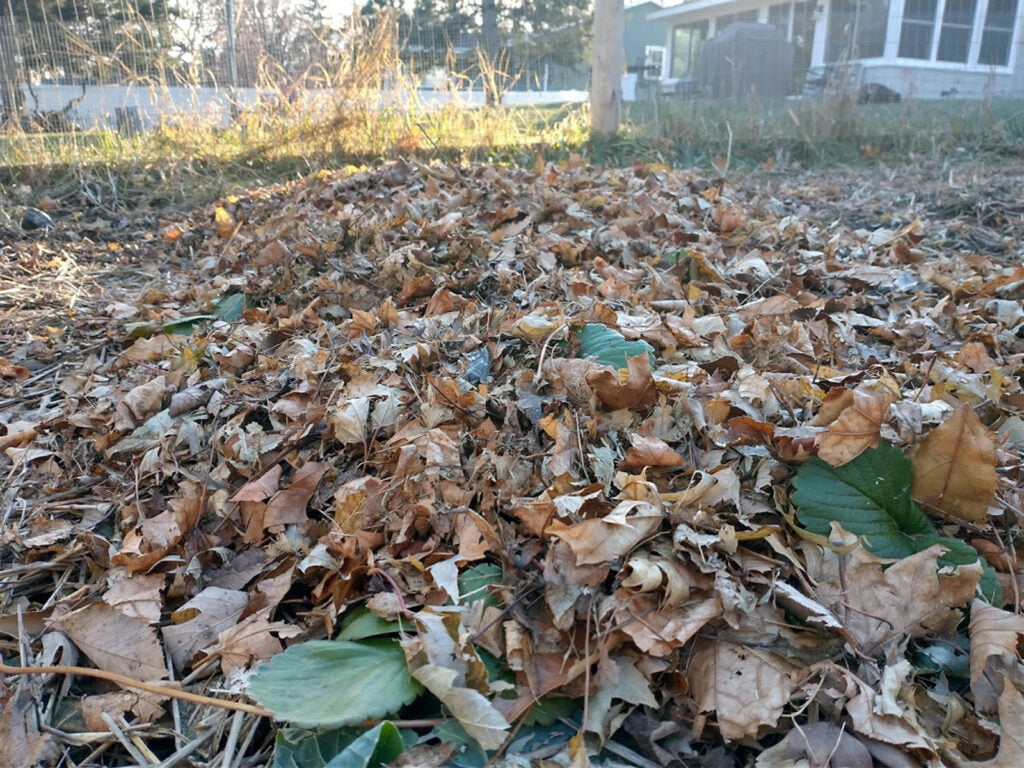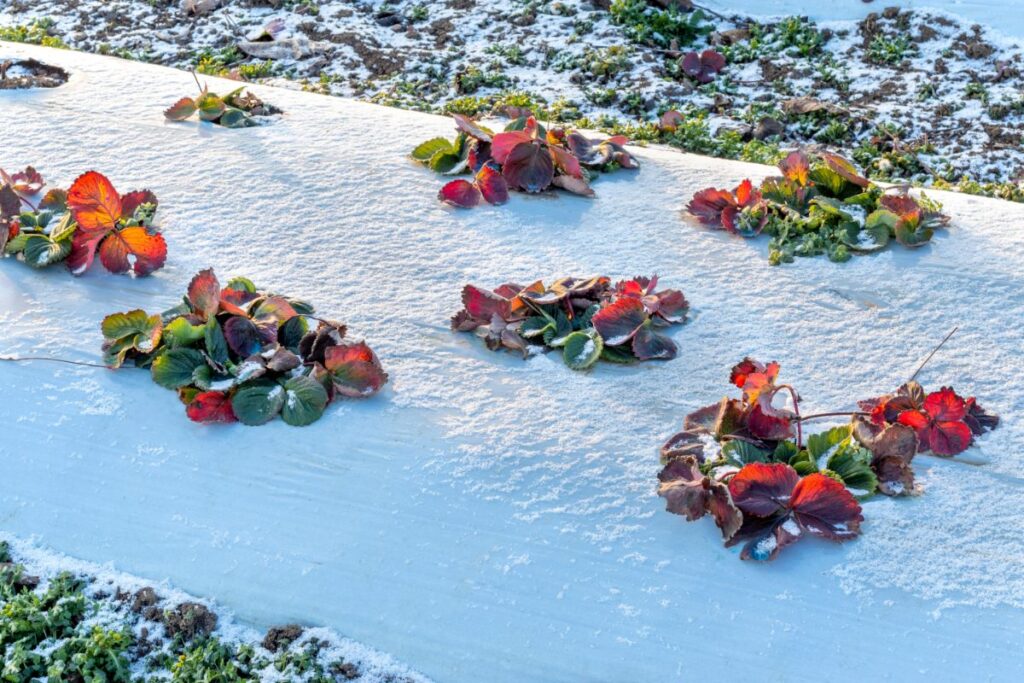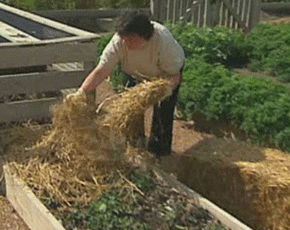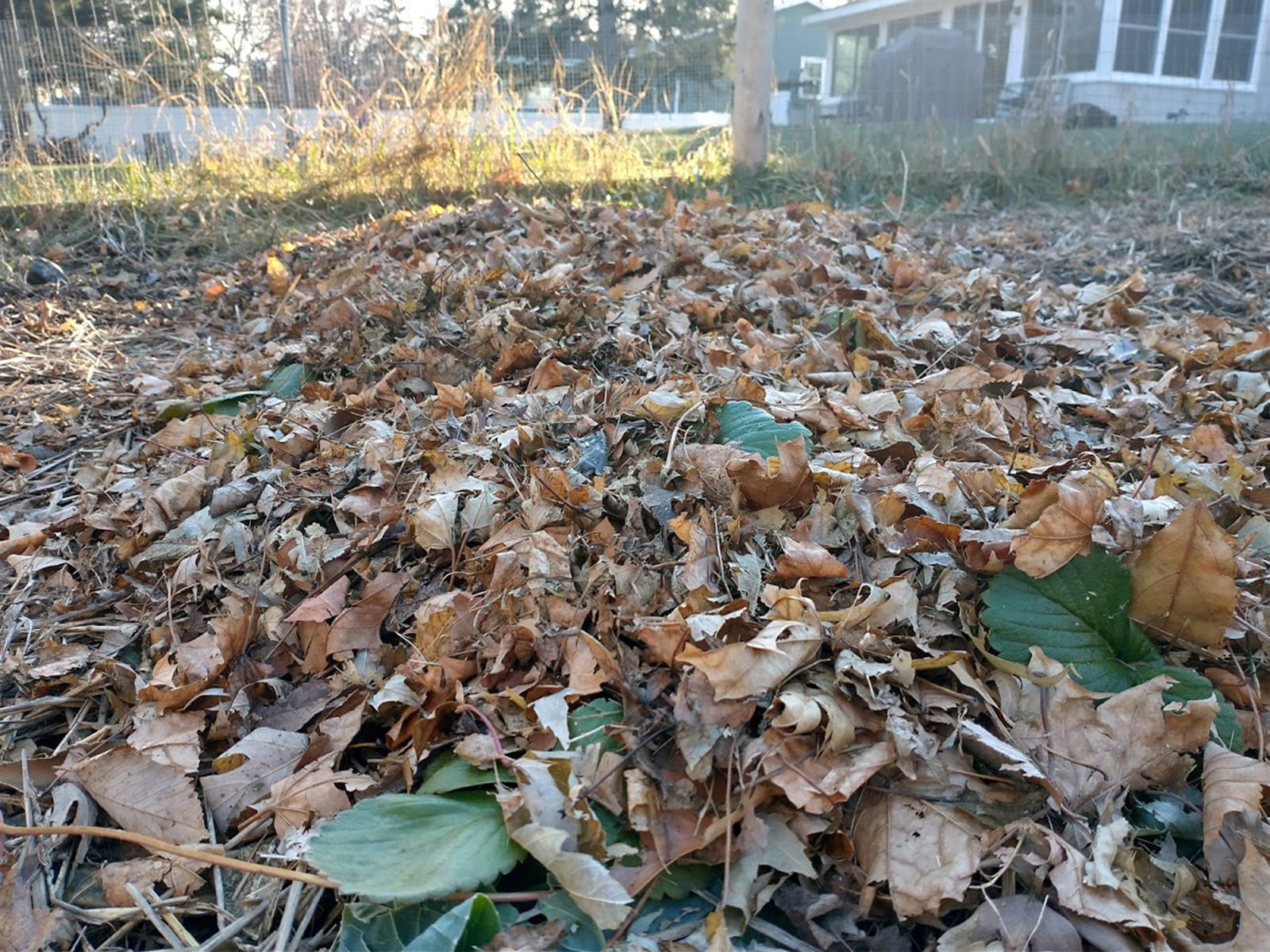In the world of gardening, the question of whether or not to cover strawberries in the winter is a topic of great discussion and debate. As the temperature drops and winter sets in, gardeners are faced with the dilemma of protecting their beloved strawberry plants from the harsh elements. While some believe that covering strawberries is crucial to their survival, others argue that it may not be necessary or even beneficial. In this article, we will explore the different perspectives on this matter and uncover the truth behind this age-old question. With the goal of providing you with the knowledge to make an informed decision, we will examine the potential benefits and drawbacks of covering strawberries in the winter, as well as offer some expert advice on how to effectively protect these delicate plants.

Why cover strawberries in the winter?
Protecting from freezing temperatures
Covering strawberries in the winter is essential to protect them from freezing temperatures. Strawberries are sensitive to cold weather and can suffer from damage or death if exposed to prolonged freezing temperatures. By covering the plants, you create a barrier that helps to trap heat and maintain a more stable temperature around the plants.
Preventing damage from frost
Frost can cause significant damage to strawberry plants, especially the blossoms and young fruit. The formation of ice crystals on the delicate plant tissues can lead to cell damage and inhibit proper growth and development. By covering strawberries, you provide a shield against frost and reduce the risk of damage to the plants.
Maintaining moisture levels
Another reason to cover strawberries in winter is to maintain optimal moisture levels. Cold winter winds can cause the plants to lose moisture through transpiration, which can lead to dehydration and stress. By using covers, you create a microclimate that helps to retain moisture around the plants, preventing them from drying out and maintaining their health and productivity.
When to cover strawberries?
Determining the right time
Knowing when to cover strawberries in winter is crucial for their protection. The best time to cover your strawberry plants is before the first frost of the season. Keeping an eye on weather forecasts and identifying when the temperature is expected to drop to near or below freezing is essential. It is recommended to cover the plants at least 24 hours before the expected freezing temperatures to ensure adequate protection.
Monitoring temperature changes
Regularly monitoring temperature changes during the winter season is important to determine when to cover strawberries. Temperature fluctuations can occur, and sudden drops in temperature can be damaging to the plants. By closely monitoring weather reports and using a thermometer to measure the temperature in your garden, you can make timely decisions to cover the strawberries and shield them from harm.
Considering local climate conditions
The decision to cover strawberries may vary depending on the local climate conditions in your area. Some regions experience milder winters with less severe temperatures, while others have harsher and more prolonged periods of freezing weather. Understanding the typical winter climate in your location can help you determine if covering strawberries is necessary and the appropriate timing for providing protection.

What materials to use for covering strawberries?
Choosing the right covering material
When covering strawberries in winter, it is essential to choose the appropriate materials. The ideal covering material should be capable of providing insulation and protection against frost while allowing air and moisture exchange. Common options for covering materials include floating row covers, frost blankets, burlap, or even old bed sheets. These materials should be lightweight, easy to handle, and large enough to cover the entire strawberry bed.
Using breathable materials
Breathability is a crucial characteristic of covering materials for strawberries. It is important to select materials that allow air to circulate freely, preventing the buildup of excess moisture and reducing the risk of fungal diseases. Covers with good breathability also help to prevent excessive heat buildup during the day, maintaining an optimal temperature for the plants.
Considering insulation properties
Insulation properties are important to consider when choosing covering materials for strawberries. The materials should provide adequate insulation to trap heat and maintain a warmer microclimate around the plants. This helps to prevent freezing and frost damage. Thicker materials, such as frost blankets or floating row covers with multiple layers, provide better insulation and are more effective in protecting the strawberries from the cold.
How to properly cover strawberries?
Preparing the strawberry bed
Before covering the strawberries, it is important to prepare the strawberry bed. Remove any weeds or debris from the area to create a clean environment for the plants. Clearing the bed of any dead leaves or plant material also helps to prevent pests and diseases. Additionally, ensure that the soil is well-moistened before covering the strawberries to maintain proper hydration during the winter months.
Securing the covering materials
Properly securing the covering materials is crucial to ensure they stay in place and provide effective protection. Secure the edges of the coverings with rocks, bricks, or stakes to prevent them from being blown away by strong winds. Make sure the coverings are securely draped over the plants, allowing enough space for air circulation while still providing adequate coverage.
Ensuring proper ventilation
While covering strawberries is essential, it is equally important to ensure proper ventilation. Ventilation allows for the exchange of air and helps to prevent the buildup of excess moisture, reducing the risk of diseases. To ensure proper ventilation, leave some gaps or openings in the covering materials or periodically lift the covers on milder days to allow fresh air to circulate around the plants.

What are the different covering options?
Using row covers
Row covers are one of the most common methods used for covering strawberries in winter. They are lightweight, permeable fabrics that can be laid directly over the strawberry bed. Row covers provide protection against frost and freezing temperatures while allowing air, water, and light to pass through. They are typically held in place with stakes or clips and can be easily removed or adjusted when necessary.
Implementing floating row covers
Floating row covers are similar to regular row covers but are designed to “float” above the plants. They are supported by hoops or other structures that are placed over the strawberry bed. Floating row covers provide additional insulation and create a mini greenhouse effect, trapping heat and maintaining a warmer environment around the plants. They are particularly beneficial in colder regions with more extreme winters.
Building mini hoop tunnels
Mini hoop tunnels involve the construction of a series of hoops or arches over the strawberry beds. These arches are covered with row covers or plastic sheets, creating a tunnel-like structure. The tunnel helps to retain heat, provide insulation, and protect the strawberries from frost and freezing temperatures. Mini hoop tunnels offer more flexibility in terms of the height and width of the covering, allowing for larger strawberry beds to be protected.
Common mistakes to avoid when covering strawberries in winter
Using non-breathable materials
One common mistake when covering strawberries in winter is using non-breathable materials. Non-breathable covers trap moisture around the plants, leading to excessive condensation and increased risk of fungal diseases. It is crucial to select breathable materials that allow for proper airflow and moisture exchange to maintain a healthy growing environment.
Not providing adequate ventilation
Another mistake is not providing adequate ventilation while covering strawberries. Poor ventilation can lead to stagnant air, which increases the risk of diseases and encourages the growth of mold or mildew. Allowing for proper airflow by creating gaps or openings in the covers or periodically lifting them can help prevent these issues.
Neglecting to monitor weather conditions
Neglecting to monitor weather conditions is a critical mistake when covering strawberries in winter. Weather conditions can change rapidly, and it is important to stay updated with forecasts and temperature changes. Failing to monitor the weather may result in covers being left on unnecessarily or removed prematurely, compromising the protection and health of the strawberries.

Alternative methods for protecting strawberries in winter
Using mulch
Mulching is an alternative method for protecting strawberries in winter. Applying a layer of mulch around the plants helps to insulate the soil and regulate soil temperature. Mulch also helps to prevent moisture loss from the soil, maintaining proper hydration for the plants. Straw, hay, or wood chips are commonly used as mulching materials and should be applied after the first frost.
Applying protective sprays
Protective sprays can be used as an additional measure to protect strawberries from winter damage. Anti-desiccant sprays, also known as anti-transpirants, can be applied to the plants to reduce moisture loss through the leaves. These sprays form a thin film on the foliage, minimizing water evaporation and shielding the plants from freezing temperatures.
Transferring strawberries indoors
In regions with extremely harsh winters, another option is to transfer strawberries indoors. This can be done by planting strawberries in containers or pots and bringing them inside during the winter months. By providing a controlled indoor environment, you can ensure the plants are protected from freezing temperatures and continue to receive adequate sunlight and moisture.
How long to keep strawberries covered?
Determining the duration of coverage
The duration of coverage for strawberries depends on the severity of the winter weather and the specific conditions in your area. As a general guideline, strawberries should be covered during periods of freezing temperatures and frost. Typically, covers are kept on overnight and removed during the day when temperatures rise above freezing.
Considering temperature fluctuations
Temperature fluctuations play a role in determining how long strawberries should be covered. Even if the daytime temperatures rise above freezing, it is important to consider the nighttime temperatures and potential frost conditions. Continuing to cover the strawberries during periods of fluctuating temperatures can help protect them from sudden drops that may occur during the night.
Monitoring plant health
The health and condition of the strawberry plants should also be monitored to determine how long they should remain covered. If the plants start to show signs of stress or damage, it may be necessary to extend the duration of coverage to provide additional protection. Regularly inspecting the plants for any symptoms of cold damage or dehydration can help guide the decision-making process.

Signs of overcovering strawberries
Yellowing or wilting leaves
Overcovering strawberries can lead to yellowing or wilting leaves. Excessive insulation can cause heat buildup and poor ventilation, resulting in stress for the plants. If the leaves start to yellow or wilt under the coverings, it is an indication that they may be receiving too much heat or limited airflow. Adjustments should be made to provide better ventilation and regulate the temperature.
Mold or mildew growth
Mold or mildew growth on the leaves or fruit is another sign of overcovering strawberries. When covers are not breathable or there is excessive condensation due to poor ventilation, the increased moisture levels create a favorable environment for fungal diseases. If mold or mildew is observed, it is important to adjust the coverings to improve ventilation and reduce moisture buildup.
Lack of pollination
Overcovering strawberries can also lead to a lack of pollination. Bees and other pollinators play a crucial role in the pollination process, and if they are unable to reach the covered plants, there will be limited fruit set. If there is a lack of pollination and fruit development, it may be necessary to adjust the covers to allow pollinators access to the plants or consider hand-pollination methods.
When to uncover strawberries?
Monitoring weather forecasts
Uncovering strawberries should be done based on weather forecasts and temperature trends. As winter progresses and temperatures begin to rise consistently above freezing during both day and night, it is a good indication that it may be time to uncover the strawberries. Checking forecasts for sustained milder temperatures can help with deciding when to remove the covers.
Checking soil moisture levels
Soil moisture levels should also be considered when deciding when to uncover strawberries. If the soil is consistently moist and the threat of freezing temperatures has passed, it may be safe to remove the covers. However, if the soil is still frozen or excessively dry, it is advisable to keep the covers on for a little longer to provide additional protection and allow the plants to acclimate gradually.
Observing plant growth
Plant growth is another indicator of when to uncover strawberries. Once the strawberries start showing signs of active growth, such as the emergence of new leaves or flower buds, it is a good indication that they can tolerate colder temperatures and can be uncovered. However, it is important to assess the overall health and vigor of the plants before removing the covers completely.
Covering strawberries in winter is a crucial practice to protect them from freezing temperatures, prevent frost damage, and maintain optimal moisture levels. By determining the right time to cover strawberries, choosing the appropriate covering materials, and properly securing and ventilating the covers, you can provide the necessary protection for your strawberry plants. Understanding the different covering options available, avoiding common mistakes, and considering alternative methods can further enhance the winter protection for your strawberries. By monitoring the duration of coverage, looking out for signs of overcovering, and timing the uncovering based on weather forecasts and plant growth, you can ensure the successful winter care of your strawberries and pave the way for a fruitful harvest.



